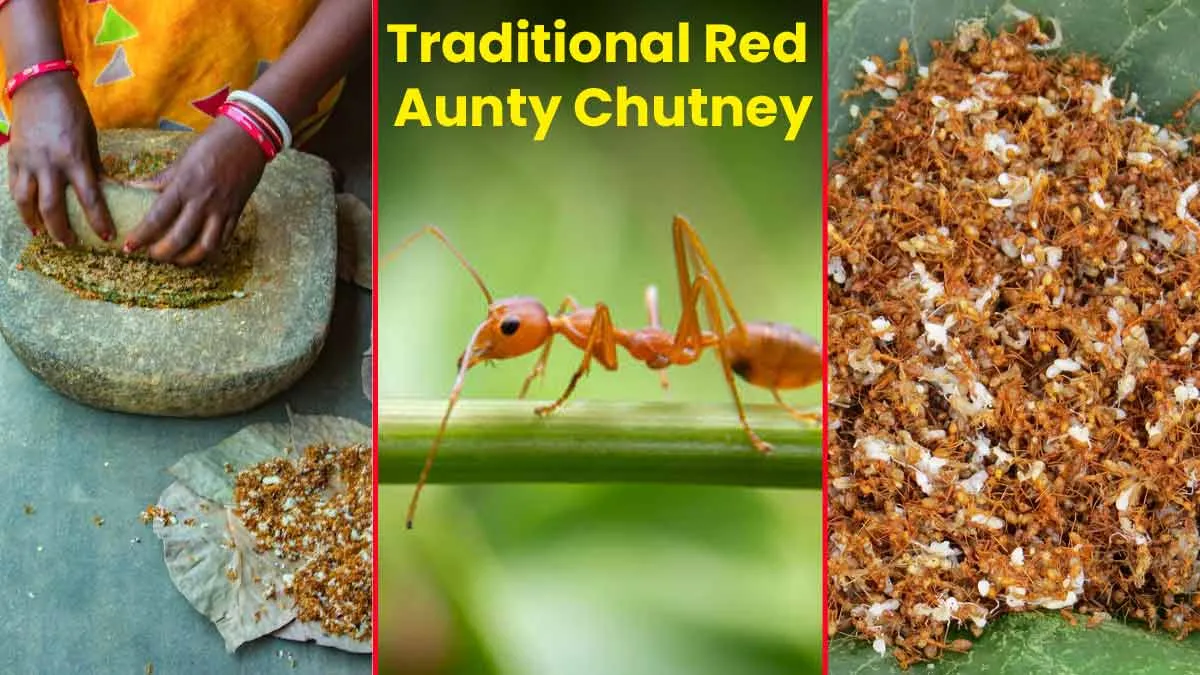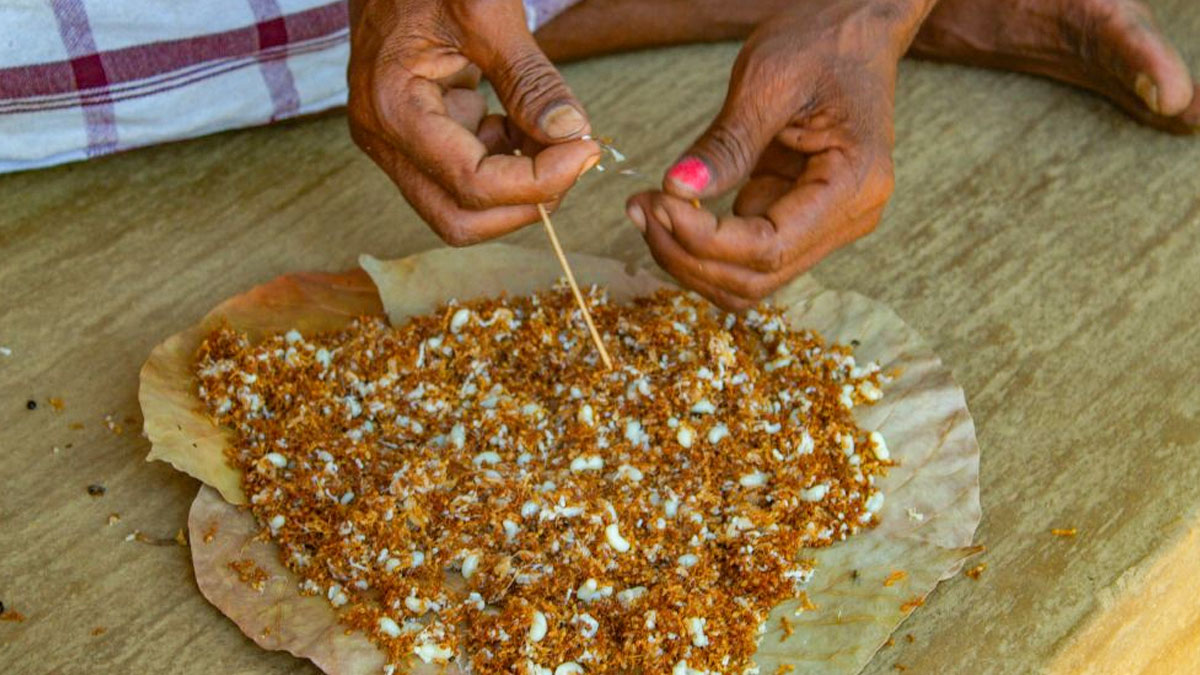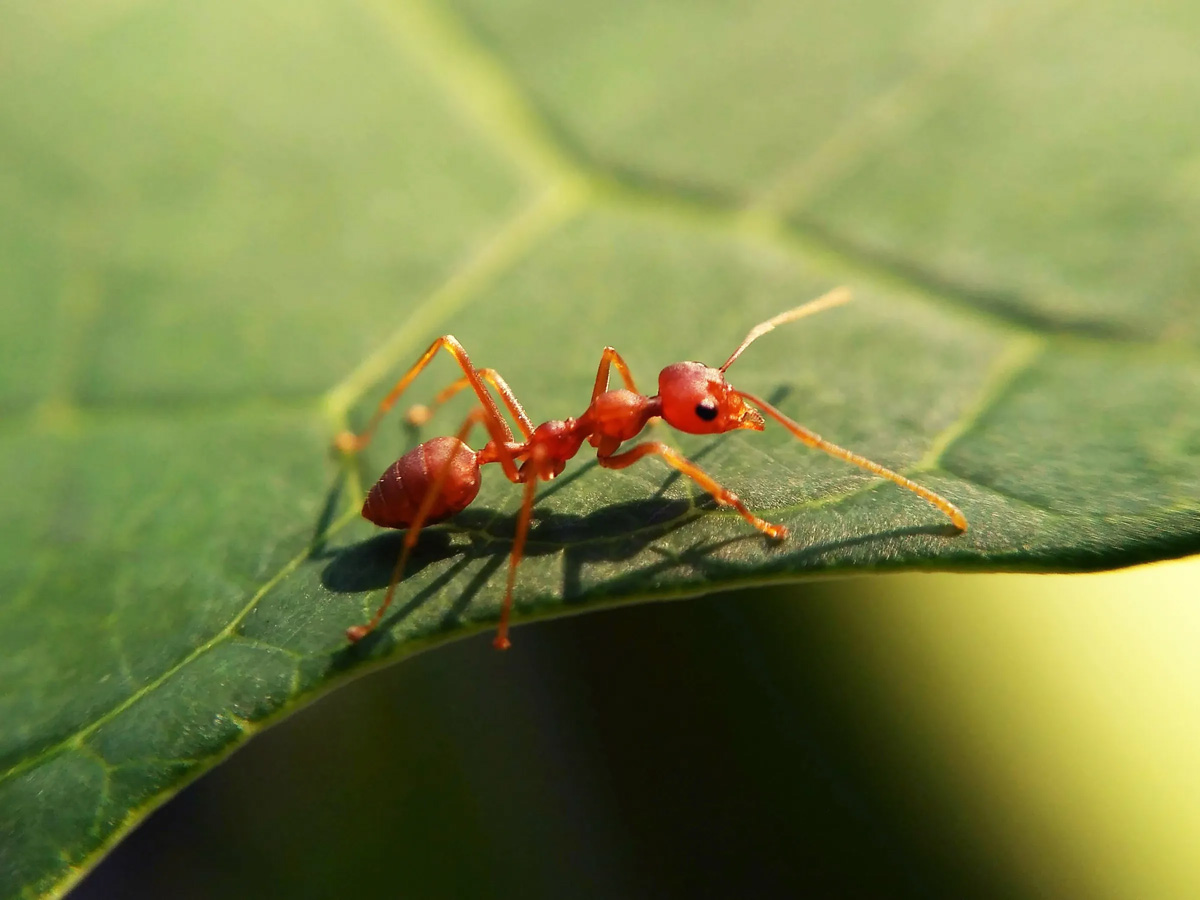
Red Ant Chutney, also called Kai Chutney, is a traditional dish from Odisha that has caught the attention of food lovers and health experts alike. Made from red weaver ants and their eggs, this chutney is famous for its tangy, spicy flavour and unique preparation. Recently, it received a Geographical Indication (GI) tag, highlighting its cultural and nutritional importance. But is it really a tribal superfood, or could it pose health risks? An expert shares what you need to know about eating Red Ant Chutney.
Table of Content:-
What Is Red Ant Chutney?
View this post on Instagram
Red Ant Chutney is made by collecting red weaver ants and their eggs from anthills in the forests of Odisha. According to Sakshi Singh, Nutritionist, Dietetic Place, Lucknow, the ants are carefully separated, cleaned, and then roasted with spices like garlic, ginger, coriander, tamarind, green chillies, and salt. The result is a thick, spicy paste with a sour taste, thanks to the natural formic acid in the ants. This chutney is a staple in the Mayurbhanj district and is now gaining popularity across India.
Nutritional Benefits: Is Red Ant Chutney a Superfood?![red aunt chutney 2 - 2025-05-05T153737.055]()
Sakshi Singh says, “Red Ant Chutney is packed with nutrients that are important for health.” Here’s what makes it special:
- High in Protein: Red ants and their eggs are rich in protein, which helps build and repair muscles.
- Vitamins and Minerals: The chutney contains vitamin B12, calcium, zinc, iron, magnesium, and potassium, all of which are needed for strong bones, a healthy brain, and good immunity.
- Aids Digestion: The enzymes and formic acid in the ants help break down food and improve digestion.
- Boosts Immunity: The high vitamin C content and antimicrobial properties can help fight infections and strengthen the immune system.
- Low in Calories: It’s a low-calorie, low-fat food, making it a healthy condiment for many diets.
The expert adds, “Red Ant Chutney is more than just a food-it’s part of the traditional medicine of tribal communities. It’s believed to help with cough, cold, fatigue, and even memory loss.” Some studies also suggest it may help with depression and support the nervous system.
ALSO READ: Berry Good for You! Expert Explains the Benefits of Eating Dark Chocolate and Strawberries Together
Are There Health Risks of Red Ant Chutney?![red aunty chuney benefits 3 - 2025-05-05T153734.212]()
While Red Ant Chutney has many benefits, Sakshi Singh warns there are some risks:
- Allergic Reactions: People allergic to insects or shellfish should avoid this chutney, as it can cause allergic reactions.
- Digestive Issues: The formic acid that gives the chutney its sour taste can irritate the stomach in some people.
- Hygiene Concerns: It’s important the chutney is made in a clean environment to avoid infections from bacteria or parasites.
- Purine Content: Red ants may be high in purines, which can raise uric acid levels and may not be suitable for people with gout.
Sakshi advises, “If you want to try Red Ant Chutney, start with a small amount and make sure it’s prepared hygienically. Listen to your body and stop if you notice any discomfort.”
How Is It Used?![red ant chutney 1 - 2025-05-05T153731.795]()
Red Ant Chutney is usually eaten with rice, roti, or other local dishes. It’s not just a food but also a source of income for many tribal families. The chutney can be stored in glass containers for up to a year without losing its taste or quality.
ALSO READ: Why Chia Seeds Are Great for Your Gut: A Gastroenterologist Explains The Reasons
Conclusion
Red Ant Chutney is a unique and nutritious food with deep roots in tribal culture. Dietician Sakshi Singh says it can be a superfood if eaten safely and in moderation. It’s rich in protein, vitamins, and minerals, but not everyone should eat it. If you’re curious, try it carefully and enjoy the flavours and health benefits of this traditional Indian delicacy.
Also watch this video
How we keep this article up to date:
We work with experts and keep a close eye on the latest in health and wellness. Whenever there is a new research or helpful information, we update our articles with accurate and useful advice.
Current Version


